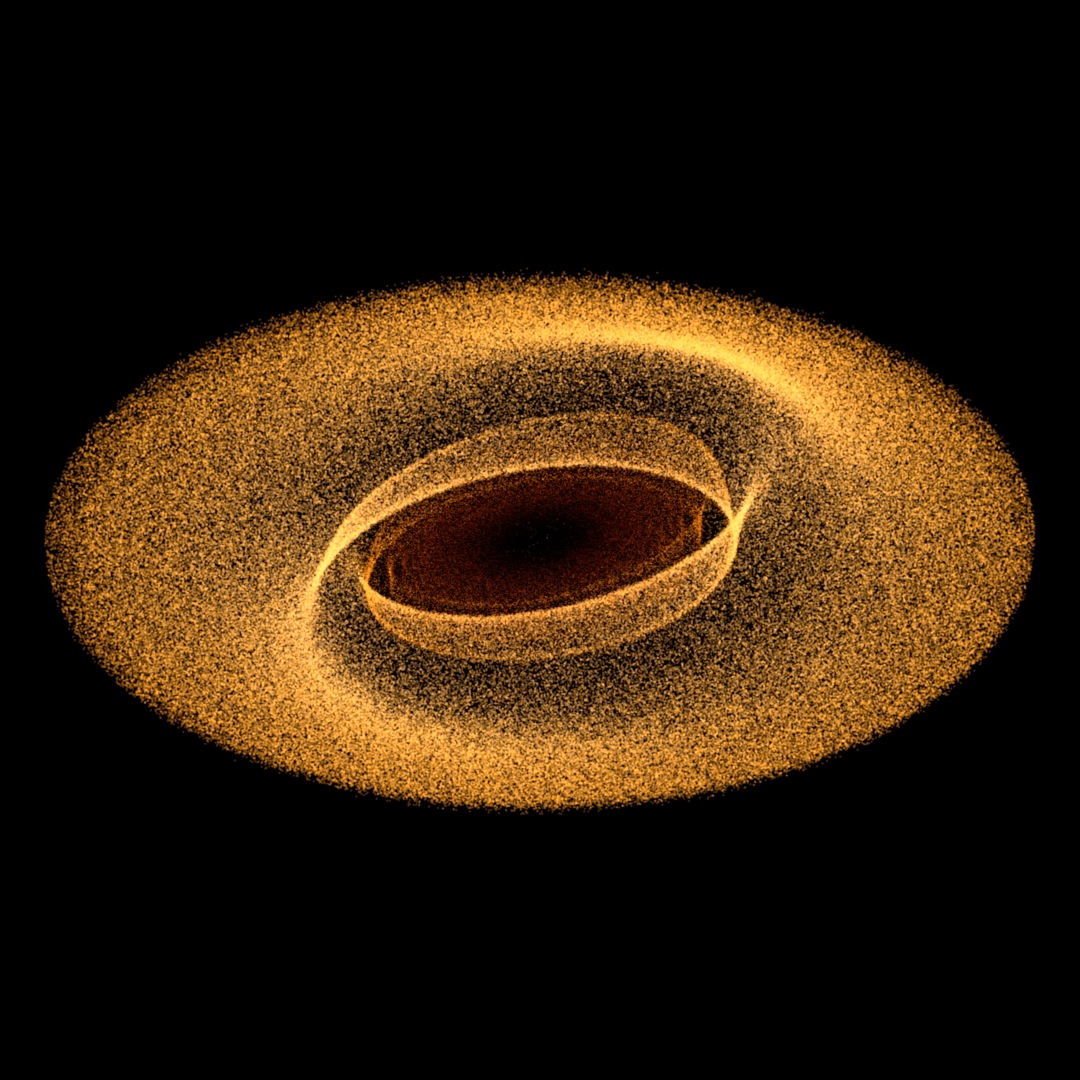Virtual Beta Pictoris

A supercomputer model reveals how the environment around a young star is shaped by a planet’s gravity.
Beta Pictoris is a star located 63 light-years away. It’s estimated to be 21 million years old, or less than 1 percent the age of our solar system. Circling the star is a planet, called Beta Pictoris b, which passes vertically through the star’s bright disk of dust and debris twice each orbit. Since the disk’s discovery, astronomers have struggled to explain various features seen in images, including a warp in its center. To help find an answer, NASA scientists created a supercomputer model of the planetary system and simulated its evolution over time. The model reveals that the planet's motion drives spiral waves throughout the disk, a phenomenon that causes collisions among the orbiting debris and shapes it into the kinds of patterns seen by telescopes. The findings will help astronomers study the debris disks around other stars and even search for new planets. Watch the video to learn more.
Beta Pictoris b is a planet with an estimated mass of about nine times Jupiter's. See how it affects the debris disk around its star in this video.

The orbit of Beta Pictoris b is shown in white, along with the simulated Beta Pictoris disk in this image.

As the planet circles its star, its gravity causes collisions among the orbiting debris that gives rise to a spiral structure in the disk.

Similar collisions give the disk a warped appearance when viewed edge-on.

The tilt of the planet’s orbit drives debris above and below the disk plane, creating the vertical waves seen in this cross-section view.
For More Information
See NASA.gov
Credits
Please give credit for this item to:
NASA's Goddard Space Flight Center
-
Writer
- Francis Reddy (Syneren Technologies)
-
Animator
- Tom Bridgman (Global Science and Technology, Inc.)
-
Producer
- Scott Wiessinger (USRA)
-
Scientists
- Marc Kuchner (NASA/GSFC)
- Erika Nesvold (UMBC)
-
Video editor
- Scott Wiessinger (USRA)
-
Videographers
- Rob Andreoli (Advocates in Manpower Management, Inc.)
- John Caldwell (Advocates in Manpower Management, Inc.)
-
Interviewees
- Marc Kuchner (NASA/GSFC)
- Erika Nesvold (UMBC)
Release date
This page was originally published on Tuesday, December 22, 2015.
This page was last updated on Wednesday, May 3, 2023 at 1:49 PM EDT.
